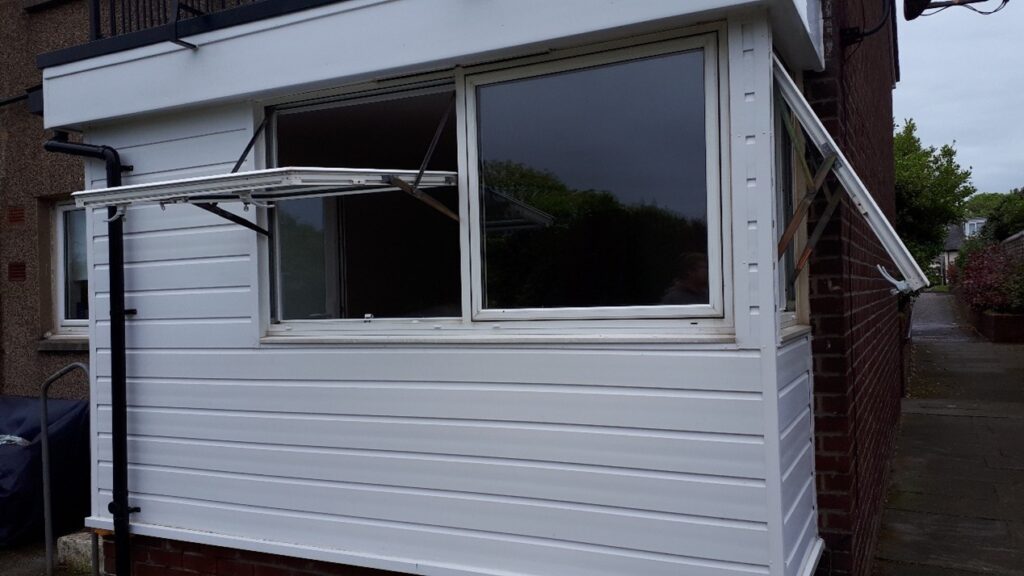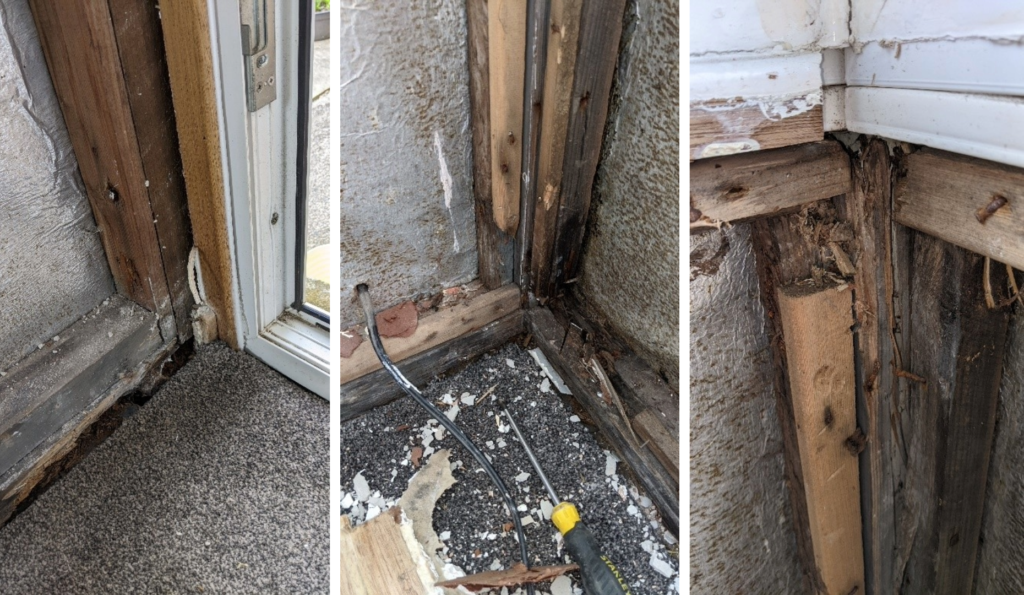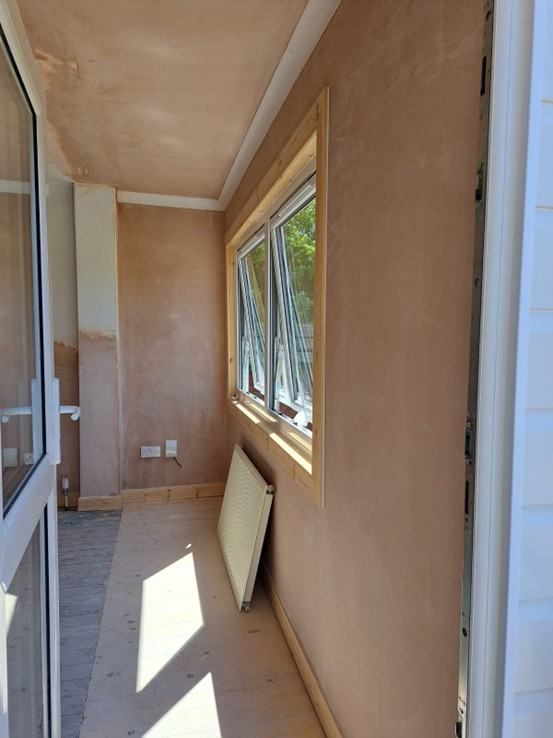Structural Repair & Insulation Solution In Prestwick

Project Overview
South Ayrshire Council engaged us to inspect a timber stud wall in a residential property, initially intending to introduce insulation. However, during our inspection, we identified significant wet rot decay (Coniophora Puteana) in conjunction with a Wood Weevil infestation, affecting the timber studs of the front elevation, the sole plate, and joist ends.
Challenges Identified
Our initial survey raised concerns beyond the insulation requirements. The wet rot was compromising the structural integrity of the timber stud, which supported the balcony deck above. We recommended a disruptive survey and advised the client to involve a structural engineer for further assessment.
The engineer’s evaluation confirmed that the supporting masonry wall had failed, along with the damp-proof membrane (DPM) meant to protect the timber stud from moisture. This created the perfect environment for wood-rotting fungi to thrive. Additionally, the existing timber studs were undersized and lacked essential lintels, exacerbating the structural weaknesses.

Our Solution
The client requested a complete structural rebuild, incorporating insulation and ensuring the remaining timbers were treated with a dual-purpose preservative. To execute this effectively:
- Our engineer provided propping details and new specifications for the stud replacement and brickwork up to damp-proof course (DPC) height.
- We carried out the necessary repairs while preserving the recently installed balcony deck surface by working from below.
- The Woodborer infestation in the deck timbers was treated from underneath, preventing unnecessary disruption to the existing structure.
Key Challenges Overcome
One of the main challenges was ensuring that all repairs were performed from below without disturbing the newly installed surface of the balcony deck. Our approach allowed us to successfully treat the Woodborer infestation while maintaining the integrity of the deck.
Benefits to the Client
- Structural Stability: The rebuilt structure now includes correctly sized timber studs with appropriate lintels and supports at the post and door.
- Enhanced Durability: The masonry wall was reconstructed and strengthened in accordance with the engineer’s design.
- Improved Energy Efficiency: Insulation was introduced into the wall, significantly enhancing thermal performance.
- Modernised Appearance: The client opted to install a brand-new PVC window as part of the refurbishment, improving both aesthetics and functionality.
- Cost Efficiency: The project was completed within the agreed timeline and budget, ensuring financial predictability for the client.
Outcome
The project was successfully completed within two weeks, providing South Ayrshire Council with a structurally sound and well-insulated property. Given the prevalence of similar issues in other council-owned properties, this project serves as a model for future remedial work across the region.









